Goats are great! Generally calm and fun-loving companions, if you have a little space for them to roam and plenty of grass to munch on they can make a perfect addition to the family. Sometimes though, their playful and competitive nature can get a little over the top, and those pointy horns can do some damage to fellow goats and humans alike.
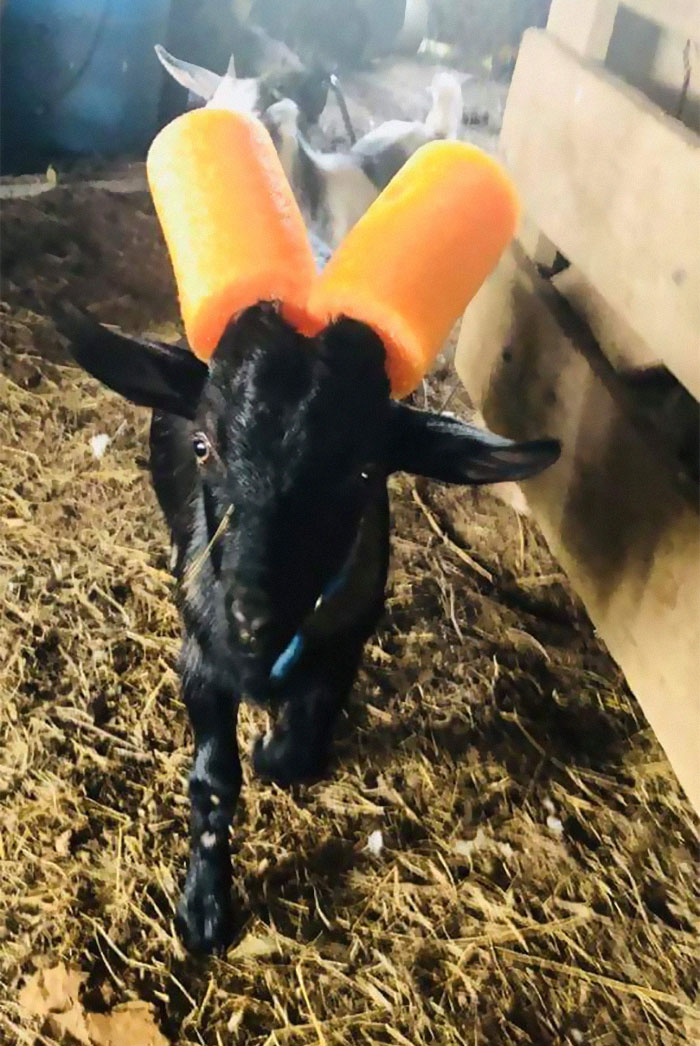

Image credits: spookperson
While training while your goat is young, to avoid any aggressive behavior when they grow up, is the most desirable course of action, this pool noodle solution is a cute and funny temporary solution. How long they actually stay on the horns before they are ripped off and chewed is questionable, but if it protects someone from injury then why not?


Image credits: yeshua_porvida
Aggressive behavior can be anything from simply stubbornly disobeying and showing no respect to owners, to biting, kicking, and pushing things around with their sharp little horns. They don’t always do it on purpose though, these pool noodles can protect children playing with goats from getting hurt, or perhaps during milking.
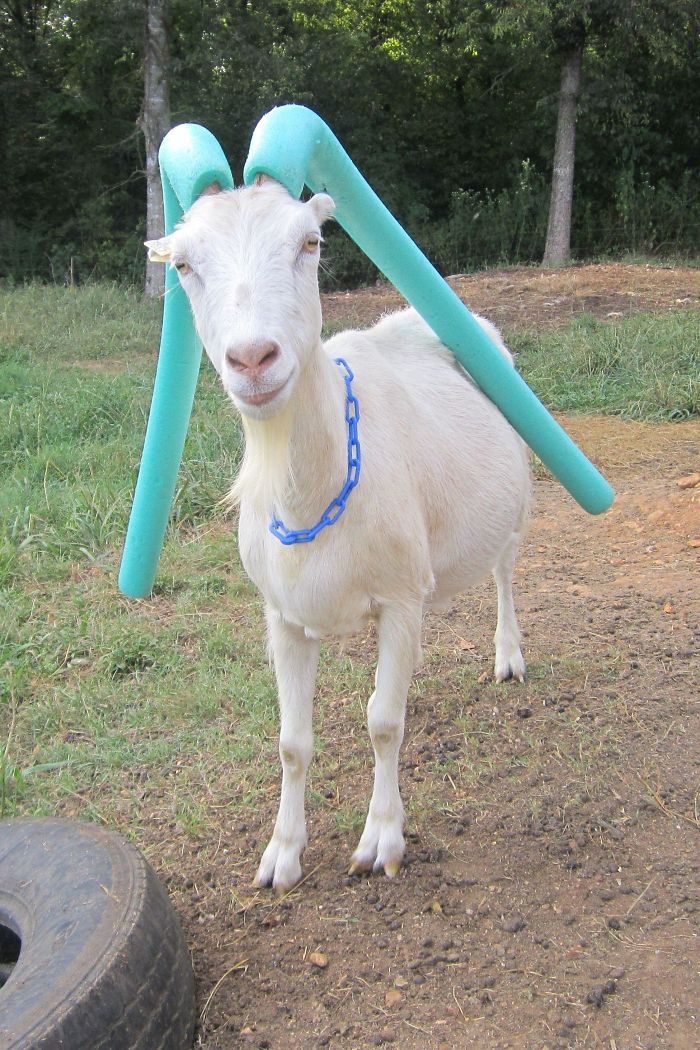
Image credits: LittleDank
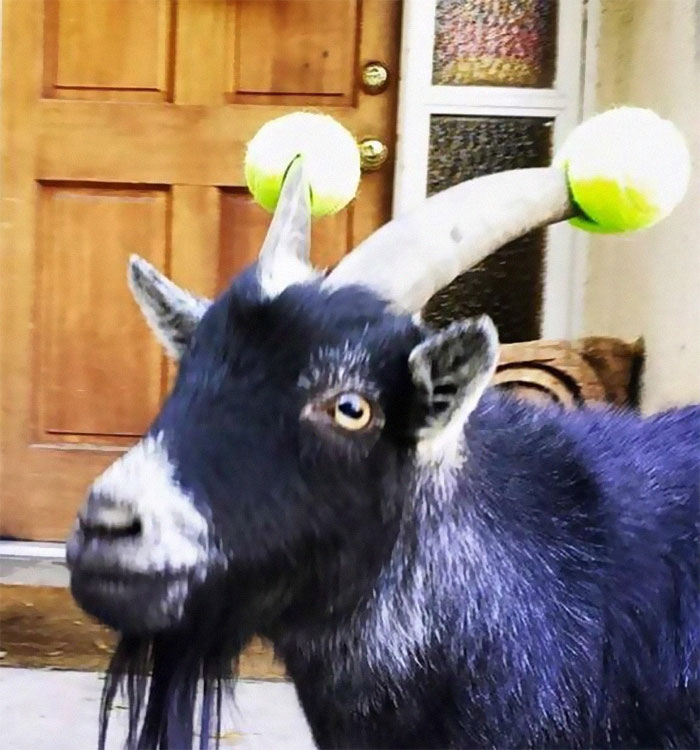

Image credits: MaldonadoBBC
And it’s not just pool noodles! People have improvised in all kind of ways to protect them from headbutts. From buckets and duct tape to tennis balls stuck on the sharpie bits.
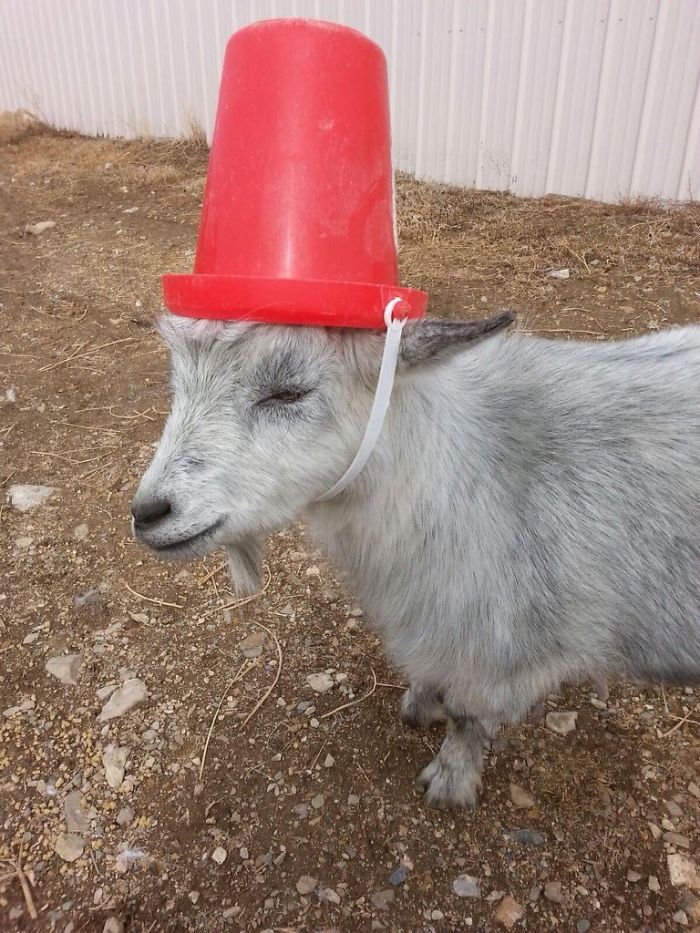

Image credits: NellieMade
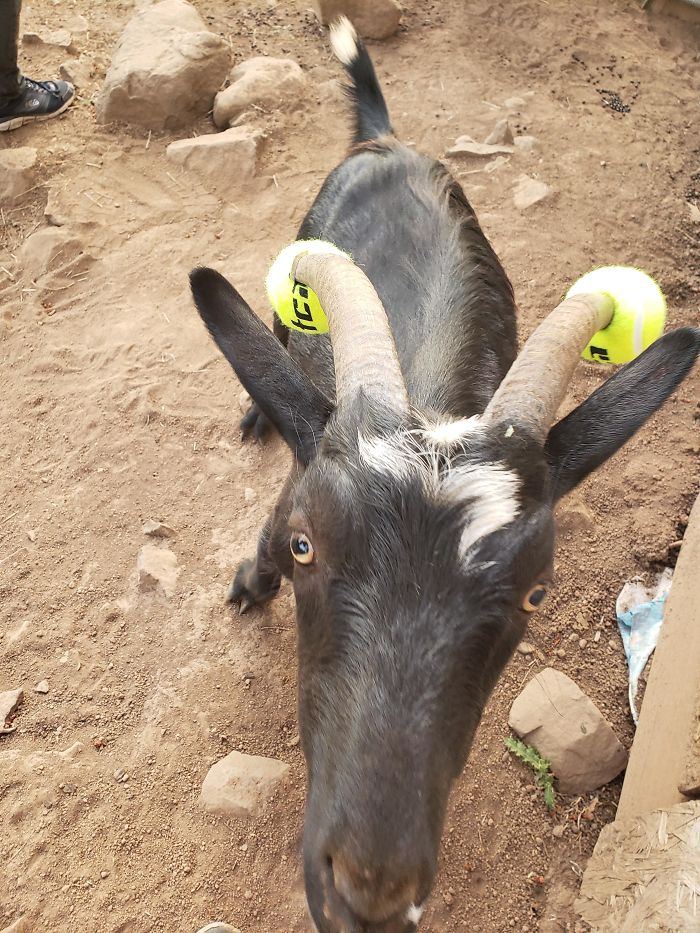
Image credits: bobateaisbesttea

Image credits: bobateaisbesttea
Whatever method you choose, remember that training is always the best option, even if goats are famously stubborn and mischievous. It may take time and patience, but you’ll have endless fun watching your buddy wandering around with brightly-colored pool noodles fastened tightly on its horns!
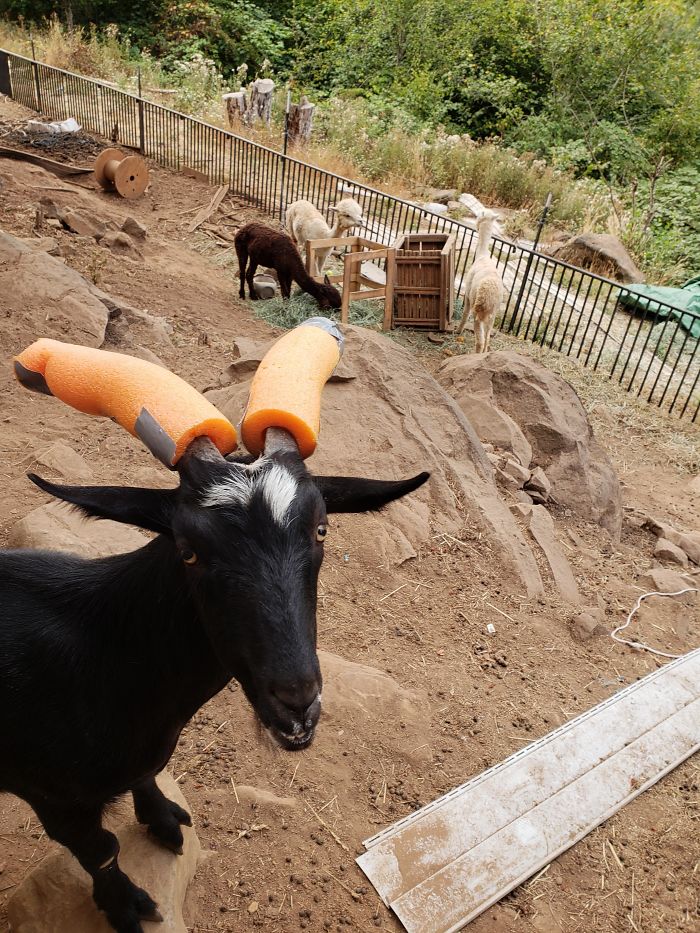
Image credits: bobateaisbesttea

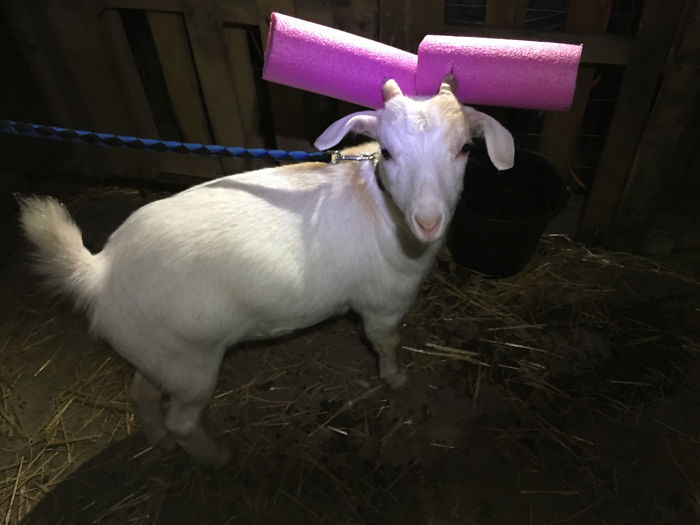
Image credits: WhiteFeatherFarms
According to the folks at Dummies, you can teach a goat to do almost anything with clicker training, just like you would with a dog. “You need a clicker, which is a mechanical device that makes a click sound, and treats such as peanuts or flakes of cereal,” they write. “By combining the click with a treat, you reinforce that the goat is doing the right thing. You need to start by getting the goat to make a connection between the clicker and a treat. To do this, click the clicker and then give the goat a treat about 20 to 30 times. Your goat begins to associate the clicker with food and eventually responds to just the clicker so you don’t have to supply a treat every time.”
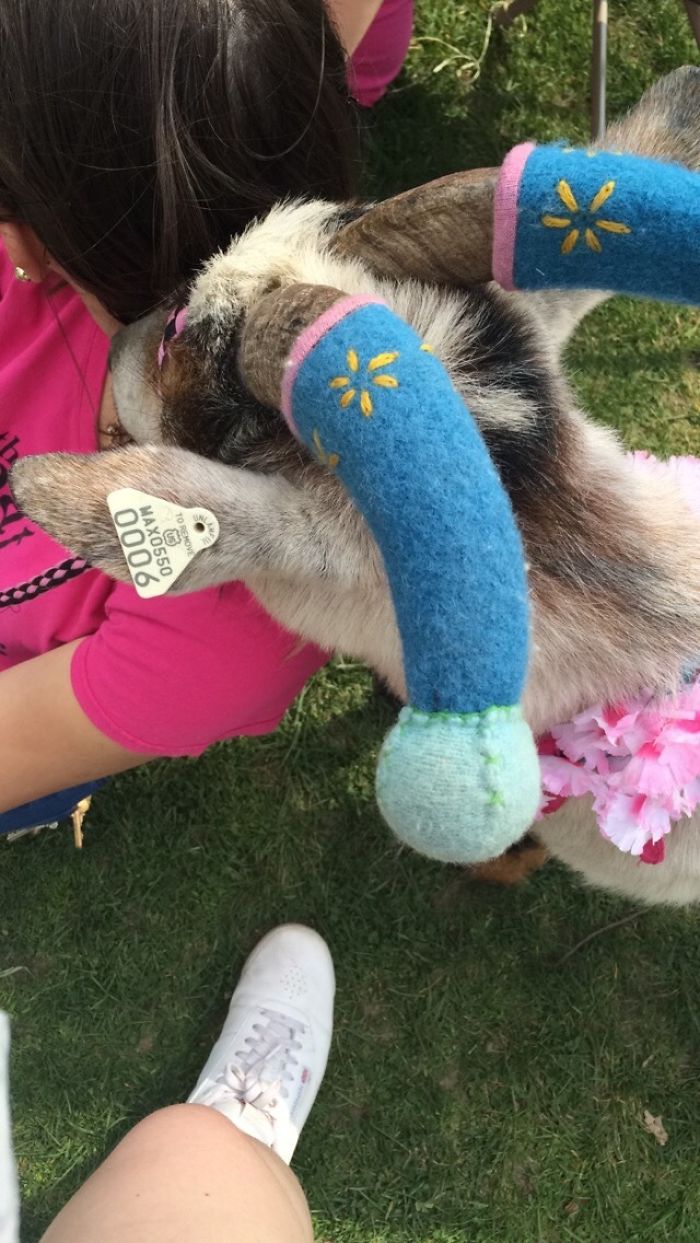
Image credits: babygoatsandfriends
“After you’ve shown the goat that treats are tied to clicks, you can start training. You train by issuing a command (“Come,” for example), and then clicking as the goat does what you want it to do and giving the goat a treat after he completes his task.”
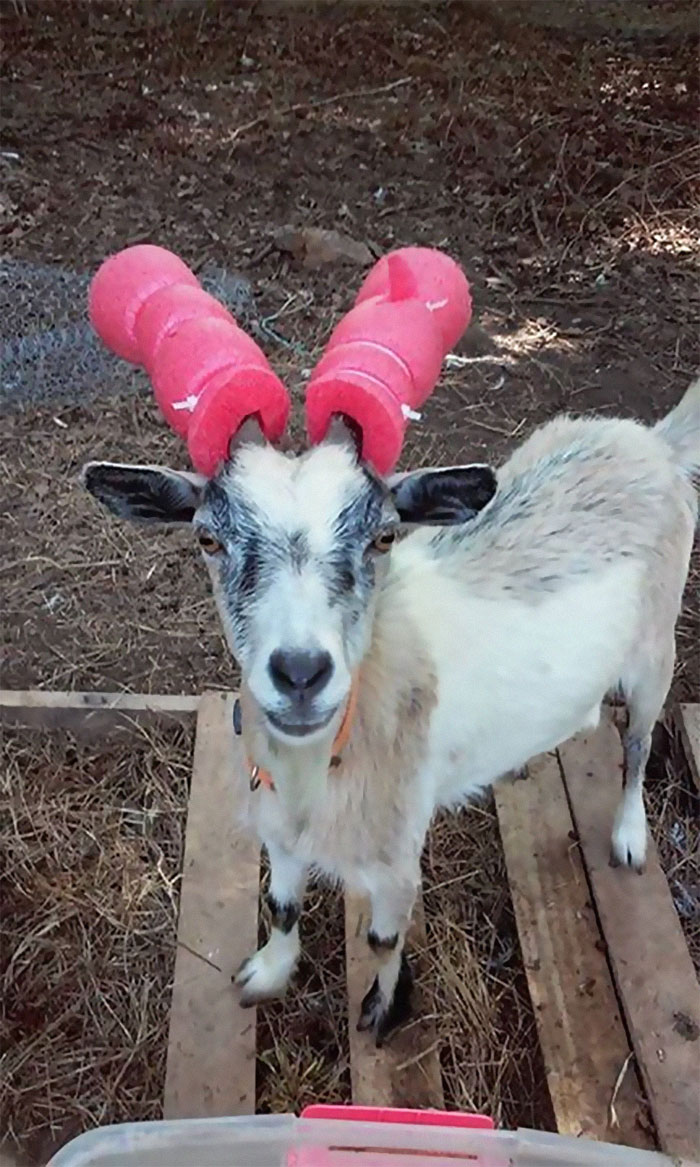

Image credits: Ross Freedman
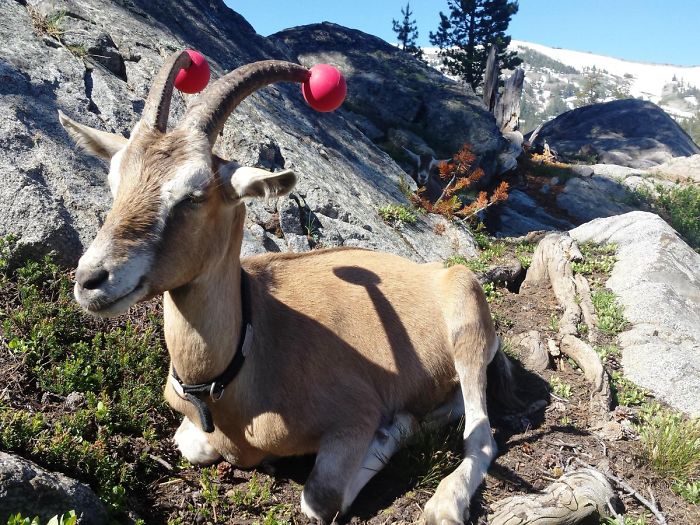
“Of course, the goat won’t follow your command without practice. If the goat doesn’t respond to the command or does the wrong thing, you can just say “wrong” or another word, and then try again. Always click as the goat does the behavior and then give the treat. If you give the treat first, you risk the goat being caught up in eating and not noticing the clicker.”
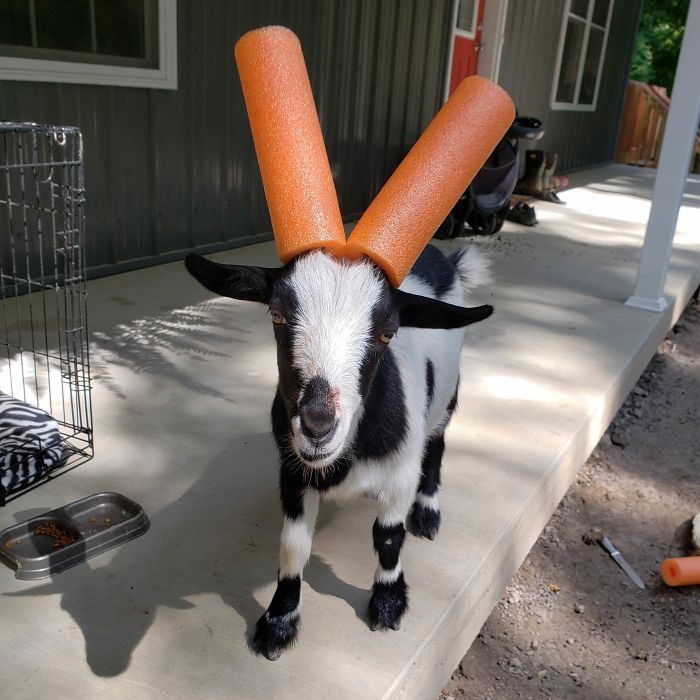
Image credits: imgur.com
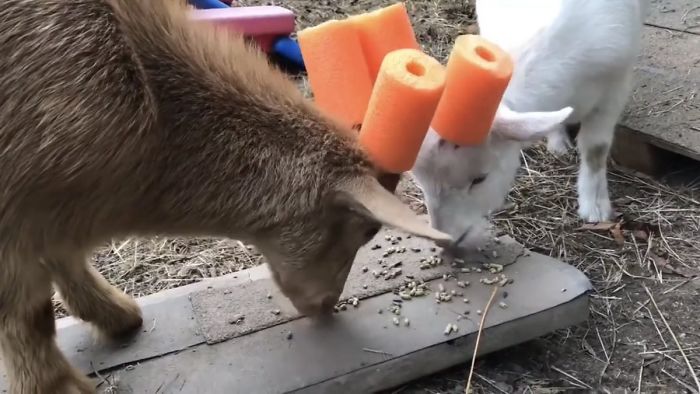
What do you think? Do you have a goat, or would you consider getting one? Could you imagine training a goat to be obedient? Tell us your opinion in the comments!
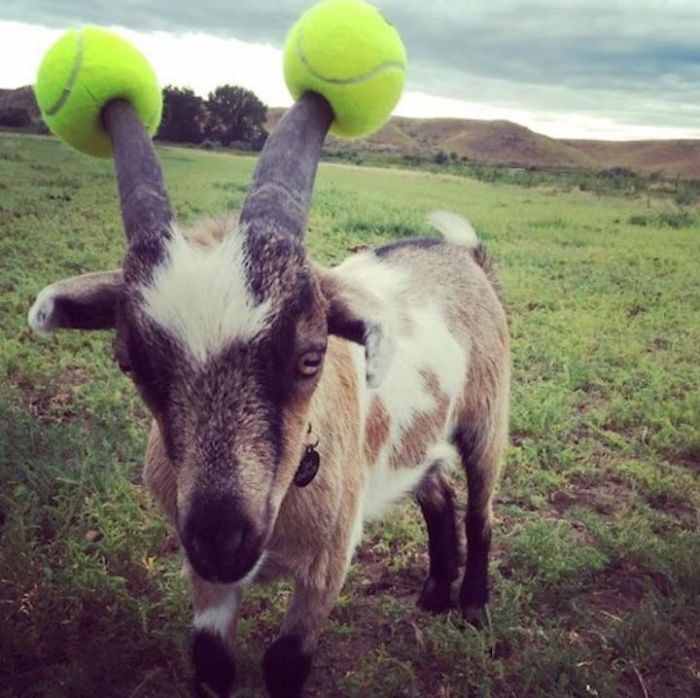
Image credits: joshg_yz250
Watch a video of a noodled-up goat in action below
from Bored Panda http://bit.ly/2XdnELU
via Boredpanda